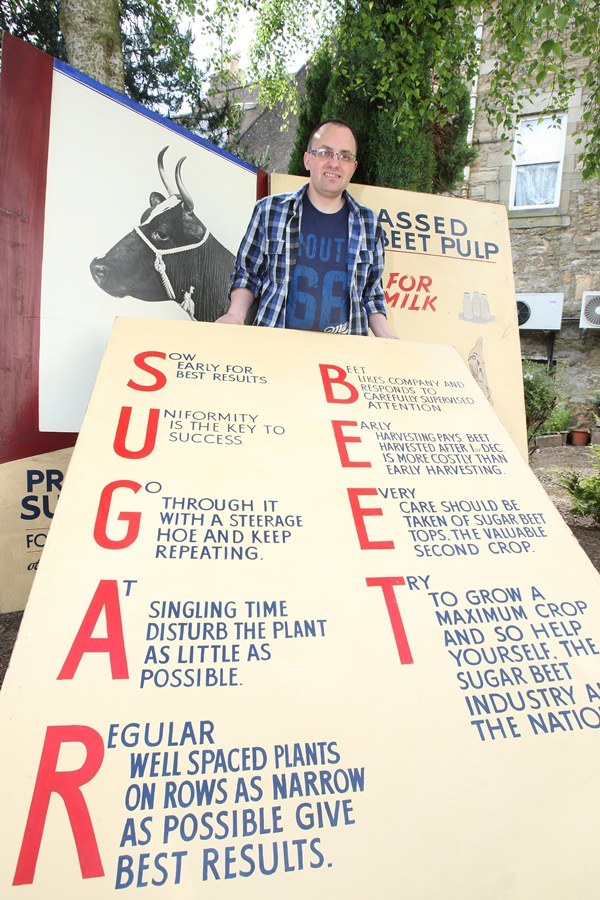A Cupar historian has saved part of the town’s industrial heritage so it can be enjoyed by future generations.
Steve Penrice, who leads historical tours around the town, received a phone call last week from someone who was clearing out part of an old building.
The property lies in the trading estate on the east of the town, and in the middle of the last century the site was the heart of a major sugar beet operation.
The man had uncovered three large signs that once adorned the sugar beet factory. He contacted Steve, who is a collector of local photography and artifacts.
The hand-painted promotional signs had been destined for the rubbish tip after years of neglect left them with a thick covering of dust, but Steve was only too happy to step in.
“I plan to research the history of the signs, and I’m hoping there are people in the area who can tell me more about them, or might even have other items connected to the beet factory,” he said.
It is not known when the signs, measuring about 6ft by 4ft, were first used.
It is hoped they will find a permanent home on public display.
The factory, parts of which remain, was built by the Second Anglo-Scottish Beet Sugar Corporation Ltd.
It opened in 1926 at a cost of over £400,000 and ended production on Christmas Day 1971, after which the building slowly deteriorated and was sold to make way for a busy trading estate.
Yesterday local agricultural expert, farming journalist and author Andrew Arbuckle said that when production was at its peak sugar beet was grown for Cupar from the Borders to Aberdeenshire, and arrived by rail at a special siding, and by road.
Mr Arbuckle said the beet was used to provide granulated and caster sugar, and the residue fed livestock.
“The operation was started after the first world war when there was a great rush for home-produced sugar, but eventually we could not grow enough acreage to justify it, and the the operation closed down.
“At one point, though, there was not enough local labour to keep the plant|operating, and hundreds of people from the Outer Hebrides came to live and work in the town.
“Most of them were McLeods, and there were so many they were identified by numbers,” Mr Arbuckle said.
The large silo was built only two years before the factory shut down, and was capable of holding around 20,000 tonnes of sugar. It is still used on occasion for storing grain.
Steve Penrice can be contacted on 07526 762084 or 01334 653687.
